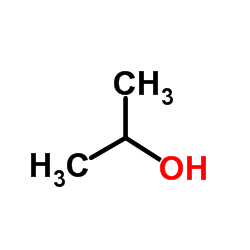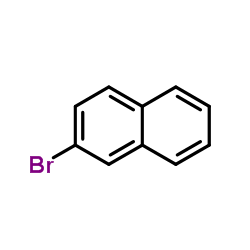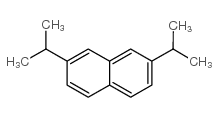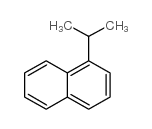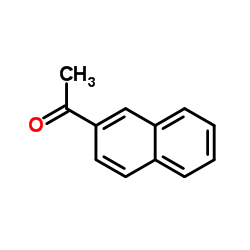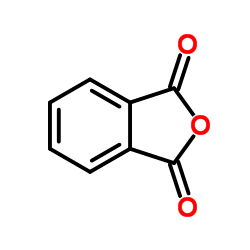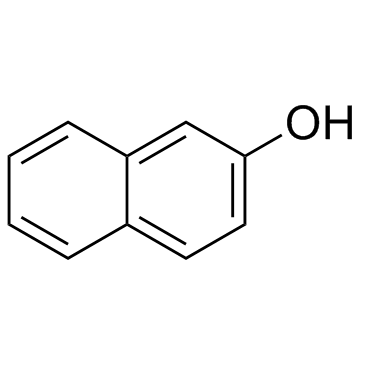2027-17-0
| 中文名 | 2-异丙基萘 |
|---|---|
| 英文名 | 2-isopropylnaphthalene |
| 英文别名 |
ISOPROPYLNAPHTHALENE
5-Hydroxy-2-isopropylpyrimidin 2-Isopropylnaphthalene 2-isopropyl-pyrimidin-5-ol 2-iso-Propylnaphthalene MFCD00014322 2-isopropylnapthalene Naphthalene, 2-(1-methylethyl)- 5-hydroxy-2-iso-propyl-pyrimidine 2-(propan-2-yl)naphthalene 2-Isopropyl-5-hydroxypyrimidin β-Isopropylnaphthalene 2-isopropyl-5-hydroxy-pyrimidine EINECS 217-976-0 Naphthalene, 2- (1-methylethyl)- |
| 密度 | 1.0±0.1 g/cm3 |
|---|---|
| 沸点 | 268.2±0.0 °C at 760 mmHg |
| 熔点 | 14°C |
| 分子式 | C13H14 |
| 分子量 | 170.250 |
| 闪点 | 109.7±8.9 °C |
| 精确质量 | 170.109543 |
| LogP | 4.79 |
| 蒸汽压 | 0.0±0.2 mmHg at 25°C |
| 折射率 | 1.586 |
| 储存条件 | 保持贮藏器密封、储存在阴凉、干燥的地方,确保工作间有良好的通风或排气装置 |
| 稳定性 | 1. 如果遵照规格使用和储存则不会分解,未有已知危险反应,避免氧化物 2. 存在于香料烟烟叶中。 |
| 计算化学 | 1.疏水参数计算参考值(XlogP):无 2.氢键供体数量:0 3.氢键受体数量:0 4.可旋转化学键数量:1 5.互变异构体数量:无 6.拓扑分子极性表面积0 7.重原子数量:13 8.表面电荷:0 9.复杂度:159 10.同位素原子数量:0 11.确定原子立构中心数量:0 12.不确定原子立构中心数量:0 13.确定化学键立构中心数量:0 14.不确定化学键立构中心数量:0 15.共价键单元数量:1 |
| 更多 | 1. 性状:液体 2. 密度(g/mL,25ºC):0.975 3. 相对密度(20℃,4℃):0.9762 4. 熔点(ºC):14.5 5. 沸点(ºC):268 6. 相对密度(25℃,4℃):0.9727 7. 折射率(n20D) :1.5848 8. 闪点(°C):268 9. 常温折射率(n20):1.5861 10. 常温折射率(n25):1.5839 11. 蒸气压(kPa,20ºC):未确定 12. 饱和蒸气压(kPa,25ºC):未确定 13. 燃烧热(KJ/mol):未确定 14. 临界温度(ºC):未确定 15. 临界压力(KPa):未确定 16. 油水(辛醇/水)分配系数的对数值:未确定 17. 爆炸上限(%,V/V):未确定 18. 爆炸下限(%,V/V):未确定 19. 溶解性:难溶解于水的 |
|
Section I.Chemical Product and Company Identification Chemical Name 2-Isopropylnaphthalene (beta-) Portland OR SynonymNot available. Chemical FormulaC10H7CH(CH3)2 CAS Number2027-17-0 Section II.Composition and Information on Ingredients Chemical NameCAS Number Percent (%)TLV/PELToxicology Data 2-Isopropylnaphthalene (beta-)2027-17-0Min. 94.0 Not available.Mouse LD50 (oral) 5300 mg/kg (GC) Section III. Hazards Identification Acute Health EffectsNo specific information is available in our data base regarding the toxic effects of this material for humans. However, exposure to any chemical should be kept to a minimum. Skin and eye contact may result in irritation. May be harmful if inhaled or ingested. Always follow safe industrial hygiene practices and wear proper protective equipment when handling this compound. CARCINOGENIC EFFECTS : Not available. Chronic Health Effects MUTAGENIC EFFECTS : Not available. TERATOGENIC EFFECTS : Not available. Toxicity to the reproductive system: Not available. There is no known effect from chronic exposure to this product. Repeated or prolonged exposure to this compound is not known to aggravate existing medical conditions. Section IV.First Aid Measures Eye ContactCheck for and remove any contact lenses. DO NOT use an eye ointment. Flush eyes with running water for a minimum of 15 minutes, occasionally lifting the upper and lower eyelids. Seek medical attention. Treat symptomatically and supportively. Skin ContactIf the chemical gets spilled on a clothed portion of the body, remove the contaminated clothes as quickly as possible, protecting your own hands and body. Place the victim under a deluge shower. If the chemical touches the victim's exposed skin, such as the hands: Gently and thoroughly wash the contaminated skin with running water and non-abrasive soap. Be particularly careful to clean folds, crevices, creases and groin. Cover the irritated skin with an emollient. Seek medical attention. Treat symptomatically and supportively. Wash any contaminated clothing before reusing. InhalationIf the victim is not breathing, perform artificial respiration. Loosen tight clothing such as a collar, tie, belt or waistband. If breathing is difficult, oxygen can be administered. Seek medical attention. Treat symptomatically and supportively. Remove dentures if any. Have conscious person drink several glasses of water or milk. INDUCE VOMITING by sticking Ingestion finger in throat. Lower the head so that the vomit will not reenter the mouth and throat. NEVER give an unconscious person anything to ingest. Seek medical attention. Treat symptomatically and supportively. Section V. Fire and Explosion Data Not available. FlammabilityCombustible.Auto-Ignition Flammable Limits Flash PointsNot available. 122°C (251.6°F) Combustion ProductsThese products are toxic carbon oxides (CO, CO 2). Fire Hazards No specific information is available regarding the flammability of this compound in the presence of various materials. Explosion HazardsRisks of explosion of the product in presence of mechanical impact: Not available. Risks of explosion of the product in presence of static discharge: Not available. No additional information is available regarding the risks of explosion. Fire Fighting Media SMALL FIRE: Use DRY chemicals, CO 2, water spray or foam. LARGE FIRE: Use water spray, fog or foam. DO NOT use water jet. and Instructions Continued on Next Page 2-Isopropylnaphthalene (beta-) Section VI.Accidental Release Measures Spill CleanupCombustible material. InstructionsKeep away from heat and sources of ignition. Mechanical exhaust required. Stop leak if without risk. Finish cleaning the spill by rinsing any contaminated surfaces with copious amounts of water. Section VII. Handling and Storage Keep away from heat and sources of ignition. Mechanical exhaust required. When not in use, tightly seal the container Handling and Storage and store in a dry, cool place. Avoid excessive heat and light. Do not breathe gas, fumes, vapor or spray. In case of Information insufficient ventilation, wear suitable respiratory equipment. If you feel unwell, seek medical attention and show the label when possible. Treat symptomatically and supportively. Avoid contact with skin and eyes. Always store away from incompatible compounds such as oxidizing agents. Section VIII. Exposure Controls/Personal Protection Engineering ControlsProvide exhaust ventilation or other engineering controls to keep the airborne concentrations of vapors below their respective threshold limit value. Ensure that eyewash station and safety shower is proximal to the work-station location. Personal ProtectionSplash goggles. Lab coat. Vapor respirator. Boots. Gloves. A MSHA/NIOSH approved respirator must be used to avoid inhalation of the product. Suggested protective clothing might not be sufficient; consult a specialist BEFORE handling this product. Exposure LimitsNot available. Section IX. Physical and Chemical Properties Physical state @ 20°CClear, yellowish-brown liquid.Solubility Insoluble in cold water, hot water. 0.973 (water=1) Specific Gravity Molecular Weight170.25Partition Coefficient log Kow = 4.89 Boiling Point268°C (514.4°F)Vapor Pressure100 mm of Hg (@ 188.8°C) Melting Point-16°C (3.2°F)Vapor DensityNot available. Not available.100% (v/v). Refractive IndexVolatility Critical TemperatureNot available.OdorSweetish. (Slight.) ViscosityNot available.TasteNot available. Section X.Stability and Reactivity Data Stability This material is stable if stored under proper conditions. (See Section VII for instructions) Conditions of Instability Avoid excessive heat and light. Incompatibilities Reactive with strong oxidizing agents. Section XI. Toxicological Information RTECS NumberQJ8000000 Routes of ExposureIngestion. Inhalation. Mouse LD50 (oral) 5300 mg/kg Toxicity Data CARCINOGENIC EFFECTS : Not available. Chronic Toxic Effects MUTAGENIC EFFECTS : Not available. TERATOGENIC EFFECTS : Not available. Toxicity to the reproductive system: Not available. There is no known effect from chronic exposure to this product. Repeated or prolonged exposure to this compound is not known to aggravate existing medical conditions. Acute Toxic EffectsNo specific information is available in our data base regarding the toxic effects of this material for humans. However, exposure to any chemical should be kept to a minimum. Skin and eye contact may result in irritation. May be harmful if inhaled or ingested. Always follow safe industrial hygiene practices and wear proper protective equipment when handling this compound. Continued on Next Page 2-Isopropylnaphthalene (beta-) Section XII.Ecological Information EcotoxicityNot available. 2-Isopropylnaphthalene is a component of crude oil and a product of combustion which is produced and released to the Environmental Fate environment during natural fires. Emissions from petroleum refining, coal tar distillation, and gasoline and diesel fueled engines are contributors of 2-isopropylnaphthalene to the environment. 2-Isopropylnaphthalene is also used as chemical intermediate and a general solvent. Consequently, 2-isopropylnaphthalene is released to the environment via manufacturing effluents. 2-Isopropylnaphthalene is also released to the environment by municipal waste incinerators. 2-Isopropylnaphthalene should biodegrade in the environment. However, hydrolysis of 2-isopropylnaphthalene should not be important. In sunlit environmental media, 2-isopropylnaphthalene will undergo direct photolysis. 2-Isopropylnaphthalene is expected to be slightly mobile to immobile in soil. 2-Isopropylnaphthalene has the potential to bioconcentrate in aquatic organisms. 2-Isopropylnaphthalene may also partition from the water column to organic matter contained in sediments and suspended solids. Volatilization of 2-isopropylnaphthalene from environmental waters may be important. The volatilization half-lives from a model river and a model pond, the latter considers the effect of adsorption, have been estimated to be 5.2 hr and 93.6 days, respectively. 2-Isopropylnaphthalene is expected to exist entirely in the vapor phase in ambient air. In the atmosphere, reaction with photochemically produced hydroxyl radicals (half-life of 6.6 hr) is likely to be important. The most probable human exposure would be occupational exposure, which may occur through dermal contact or inhalation at places were 2-isopropylnaphthalene is produced or used. Non-occupational exposures would most likely occur via urban atmospheres, contaminated drinking water supplies and recreational activities at contaminated waterways. (Excerpted from HSDB, 1996) Section XIII. Disposal Considerations Waste DisposalRecycle to process, if possible. Consult your local or regional authorities. You may be able to dissolve or mix material with a combustible solvent and burn in a chemical incinerator equipped with an afterburner and scrubber system. Observe all federal, state, and local regulations when disposing of this substance. Section XIV. Transport Information DOT ClassificationNot a DOT controlled material (United States). PIN NumberNONE Proper Shipping NameNONE Packing Group (PG)NONE DOT Pictograms Section XV. Other Regulatory Information and Pictograms TSCA Chemical InventoryThis product is ON the EPA Toxic Substances Control Act (TSCA) inventory. (EPA) WHMIS ClassificationNot controlled under WHMIS (Canada). (Canada) EINECS Number (EEC) Not available. EEC Risk Statements Not available. 2-Isopropylnaphthalene (beta-) TCI laboratory chemicals are for research purposes only and are NOT intended for use as drugs, food additives, households, or pesticides. The information herein is believed to be correct, but does not claim to be all inclusive and should be used only as a guide. Neither the above named supplier nor any of its subsidiaries assumes any liability whatsoever for the accuracy or completeness of the information contained herein. Final determination of suitability of any material is the sole responsibility of the user. All chemical reagents must be handled with the recognition that their chemical, physiological, toxicological, and hazardous properties have not been fully investigated or determined. All chemical reagents should be handled only by individuals who are familiar with their potential hazards and who have been fully trained in proper safety, laboratory, and chemical handling procedures. Although certain hazards are described herein, we can not guarantee that these are the only hazards which exist. Our MSDS sheets are based only on data available at the time of shipping and are subject to change without notice as new information is obtained. Avoid long storage periods since the product is subject to degradation with age and may become more dangerous or hazardous. It is the responsibility of the user to request updated MSDS sheets for products that are stored for extended periods. Disposal of unused product must be undertaken by qualified personnel who are knowledgeable in all applicable regulations and follow all pertinent safety precautions including the use of appropriate protective equipment (e.g. protective goggles, protective clothing, breathing equipment, facial mask, fume hood). For proper handling and disposal, always comply with federal, state, and local regulations. SECTION 16 - ADDITIONAL INFORMATION N/A |
|
毒理学数据: 1、急性毒性:小鼠经口LD50:5300mg/kg; 生态学数据: 对水是稍微有危害的不要让未稀释或大量的产品接触地下水、水道或者污水系统,若无政府许可,勿将材料排入周围环境。 CHEMICAL IDENTIFICATION
HEALTH HAZARD DATAACUTE TOXICITY DATA
|
| RTECS号 | QJ8000000 |
|---|---|
| 海关编码 | 2902909090 |
| 上游产品 9 | |
|---|---|
| 下游产品 10 | |
| 海关编码 | 2902909090 |
|---|---|
| 中文概述 | 2902909090. 其他芳香烃. 增值税率:17.0%. 退税率:9.0%. 监管条件:无. 最惠国关税:2.0%. 普通关税:30.0% |
| 申报要素 | 品名, 成分含量 |
| Summary | 2902909090 other aromatic hydrocarbons。Supervision conditions:None。VAT:17.0%。Tax rebate rate:9.0%。MFN tariff:2.0%。General tariff:30.0% |





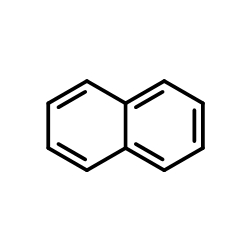

![tetrahydro-2-[[4-(2-ethynylphenyl)-2-methyl-3-butyn-2-yl]oxy]-2H-pyran结构式](https://image.chemsrc.com/caspic/393/1205051-18-8.png)
![tetrahydro-2-[[4-(2-ethynylphenyl)-2-methyl-3-butyn-2-yl]oxy]-2H-furan结构式](https://image.chemsrc.com/caspic/355/1205051-19-9.png)
